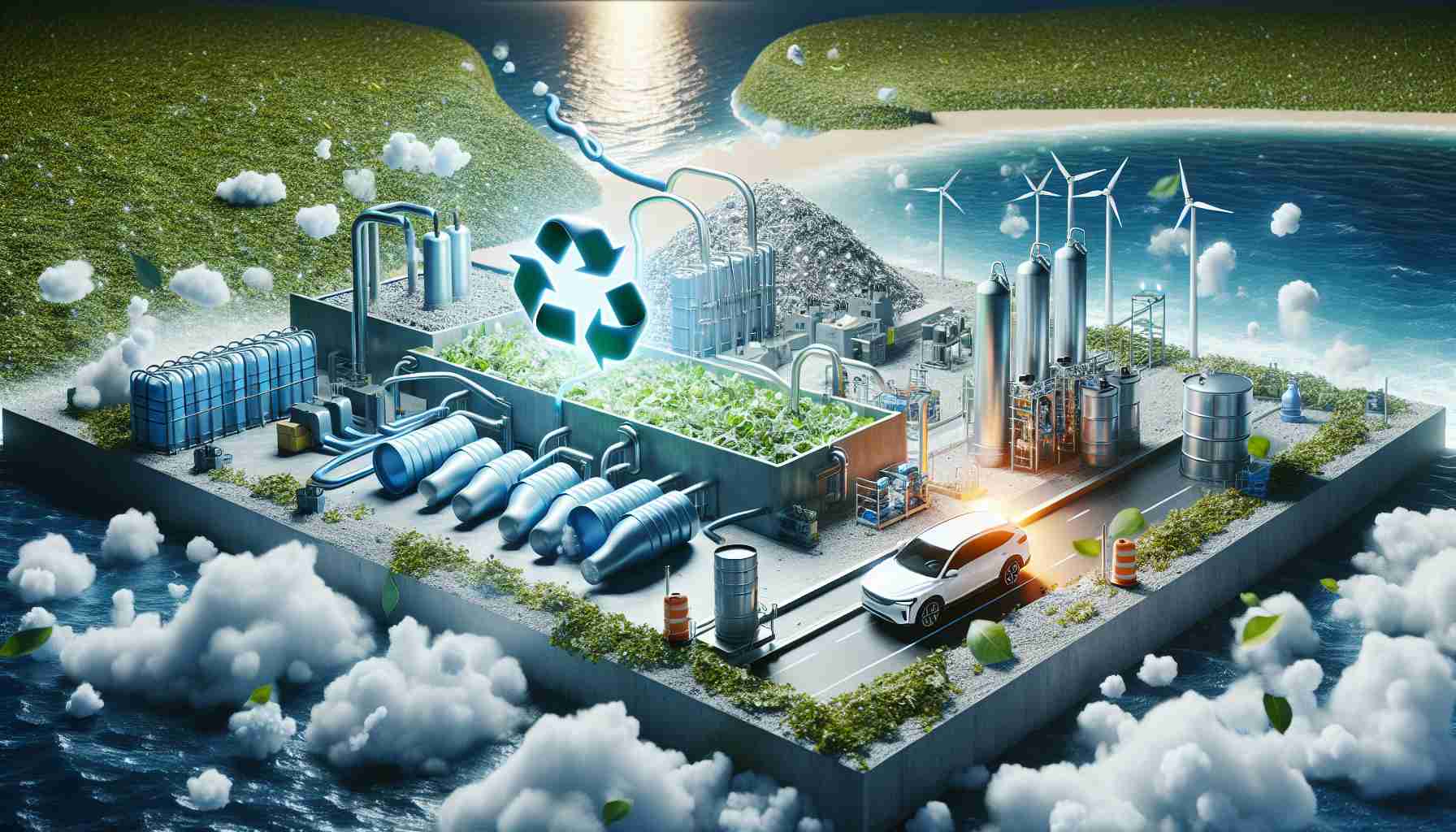Hyundai, the South Korean car manufacturer, is making strides in the hydrogen industry by implementing innovative solutions at its plant in Georgia. Instead of relying solely on traditional methods of hydrogen production, Hyundai is taking an eco-friendly approach by utilizing waste as a feedstock for creating hydrogen energy.
The company’s waste-to-hydrogen method involves breaking down organic waste using microorganisms in a process called anaerobic digestion. This process not only helps resolve waste pollution but also produces biogas, which is then upgraded to biomethane. The final step involves reforming biomethane into hydrogen, resulting in a clean and sustainable energy source.
One of the key advantages of this approach is its ability to establish mini hydrogen production hubs at the regional level. By reducing the cost of hydrogen transportation and storage, achieving hydrogen resource independence becomes feasible. Additionally, Hyundai claims that materials such as plastics that cannot be recycled or end up in landfills can also be utilized to produce hydrogen, contributing to waste reduction efforts.
Hydrogen fuel-cell trucks powered by this waste-derived hydrogen are already being used in Hyundai’s Georgia plant. These trucks have higher energy density, providing users with a greater range and minimizing range anxiety. Hyundai recognizes that hydrogen is not just about fueling vehicles but also about creating a comprehensive end-to-end solution that includes transporting, storing, dispensing, and utilizing the gas.
Furthermore, Hyundai has introduced HTWO Grid, a hydrogen value chain business brand, to accelerate the transition to a hydrogen society. This integrated package offers customized solutions for hydrogen production, storage, transportation, and utilization, catering to the diverse needs of customers at every stage.
Hyundai’s commitment to hydrogen goes beyond car manufacturing. The company intends to invest billions of dollars in the next decade to build a future centered around hydrogen, with the goal of achieving carbon neutrality across all stages of production and operation by 2045. This bold vision positions Hyundai as a leader in sustainable energy and highlights the potential of waste-to-hydrogen as a viable solution for a greener and cleaner future.
While the adoption of hydrogen technology still faces challenges due to the lack of infrastructure and mass-market applications, Hyundai’s innovative approach paves the way for a more sustainable and efficient energy industry. With plans to expand the use of hydrogen across various sectors, including trains, advanced air mobility, and sea vessels, Hyundai is driving the transition towards a hydrogen-powered world.
Hyundai’s Waste-to-Hydrogen Approach FAQ
Q: What is Hyundai’s waste-to-hydrogen method?
A: Hyundai’s waste-to-hydrogen method involves breaking down organic waste using microorganisms in a process called anaerobic digestion. This process produces biogas, which is then upgraded to biomethane and reformed into hydrogen.
Q: What are the advantages of this approach?
A: One key advantage is the ability to establish mini hydrogen production hubs at the regional level, reducing the cost of hydrogen transportation and storage. Additionally, materials like plastics that cannot be recycled can be utilized for hydrogen production, contributing to waste reduction efforts.
Q: How is waste-derived hydrogen being used?
A: Hyundai is using waste-derived hydrogen to power hydrogen fuel-cell trucks at its Georgia plant. These trucks have higher energy density, providing a greater range and minimizing range anxiety.
Q: What is HTWO Grid?
A: HTWO Grid is Hyundai’s hydrogen value chain business brand, offering customized solutions for hydrogen production, storage, transportation, and utilization. It caters to the diverse needs of customers at every stage.
Q: What is Hyundai’s commitment to hydrogen?
A: Hyundai aims to invest billions of dollars in the next decade to build a future centered around hydrogen. The company’s goal is to achieve carbon neutrality across all stages of production and operation by 2045.
Q: What are the potential applications for hydrogen technology?
A: Hyundai plans to expand the use of hydrogen across various sectors, including trains, advanced air mobility, and sea vessels, driving the transition towards a hydrogen-powered world.
Definitions:
– Anaerobic Digestion: A process that breaks down organic waste using microorganisms in the absence of oxygen.
– Biogas: A mixture of gases, mainly methane and carbon dioxide, produced from the breakdown of organic matter in the absence of oxygen.
– Biomethane: Upgraded biogas that is purified to meet natural gas pipeline specifications.
– Carbon Neutrality: The state in which an entity’s net carbon emissions are offset by capturing an equivalent amount of carbon from the atmosphere or investing in carbon reduction projects.
– Hydrogen Fuel-Cell Truck: A vehicle that uses a fuel cell to power an electric motor through the reaction between hydrogen and oxygen, producing only water vapor as a byproduct.
Suggested Related Links:
– Hyundai Official Website
– How Hydrogen Cars Work
– Fuel Cell Basics
